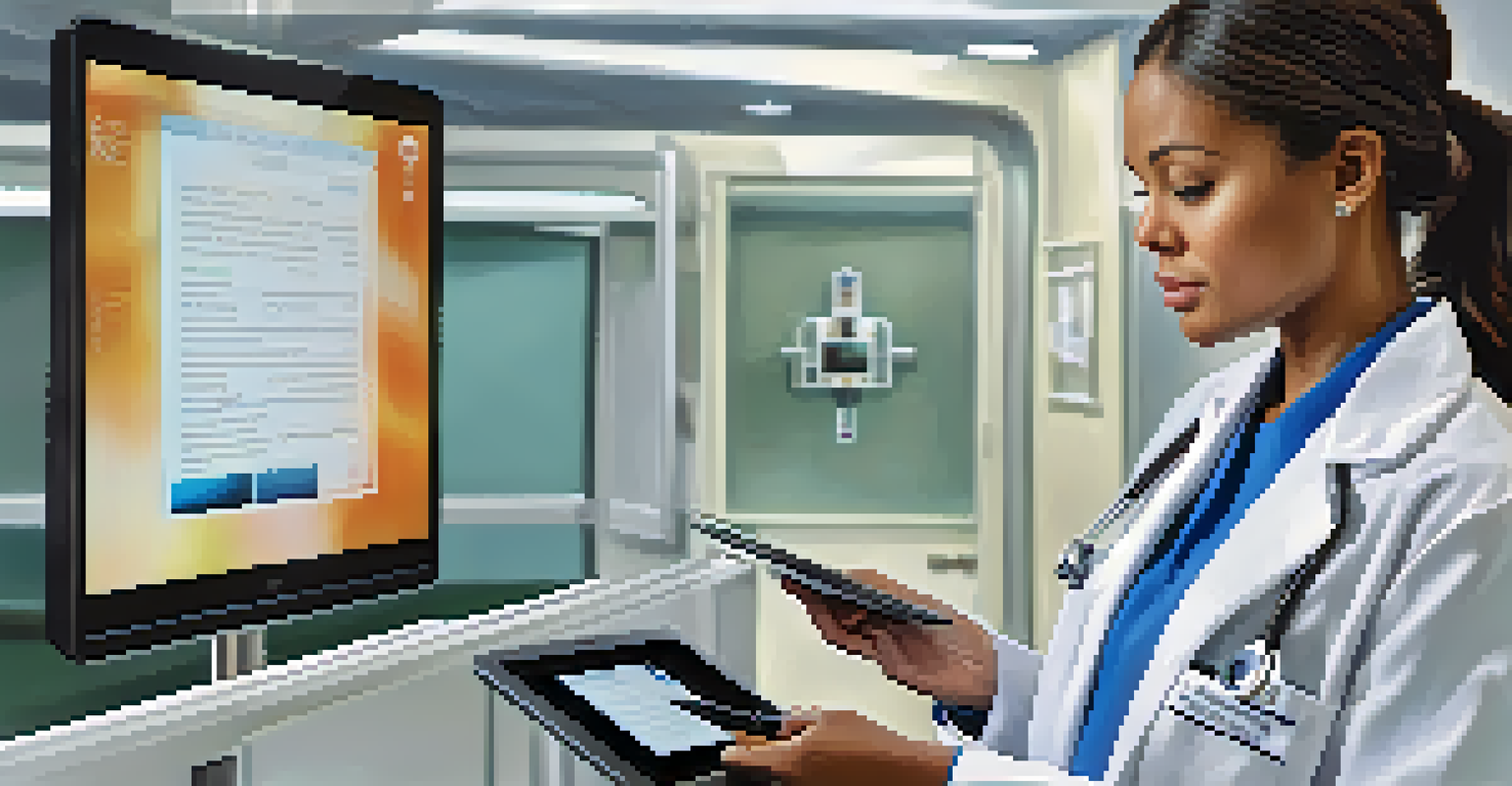Speech Recognition: Converting Voice to Text Efficiently

Understanding Speech Recognition Technology and Its Uses
Speech recognition technology translates spoken language into text. It's used in various applications, from virtual assistants like Siri and Google Assistant to transcription services and automated customer support. This technology makes it easier for people to interact with devices by simply using their voice.
The future belongs to those who believe in the beauty of their dreams.
Imagine trying to type out a long message while multitasking; speech recognition allows users to dictate their thoughts naturally, saving time and effort. This can be particularly beneficial for professionals who rely on documentation, such as writers and doctors, who need to capture information quickly and accurately.
As we delve deeper into this technology, we'll explore how it works, its benefits, and its future potential in enhancing our daily interactions with devices.
How Speech Recognition Works: The Basics Explained
At its core, speech recognition involves converting audio signals into text. The process starts with capturing the sound waves using a microphone, which are then analyzed by software algorithms that detect patterns in the audio. These algorithms utilize machine learning to improve accuracy over time, continually learning from user interactions.

Think of it like a child learning to speak; initially, they mimic sounds but gradually learn to understand and form words. Similarly, speech recognition systems evolve by processing vast amounts of voice data to refine their understanding of different accents, dialects, and speech patterns.
Speech Recognition Enhances Productivity
By allowing users to dictate rather than type, speech recognition technology significantly speeds up task completion and reduces physical strain.
Understanding this basic framework helps us appreciate the advancements made in the technology, paving the way for more intuitive and efficient user experiences.
The Benefits of Using Speech Recognition Technology
One of the most significant advantages of speech recognition is its ability to improve productivity. By allowing users to dictate rather than type, tasks can be completed faster and with less physical strain. This is especially helpful for individuals with disabilities or those who find typing tedious.
Technology is best when it brings people together.
Additionally, speech recognition enhances accessibility, making technology more inclusive for people who may struggle with traditional input methods. For instance, people with mobility challenges can use voice commands to operate devices, browse the internet, or send messages effortlessly.
In a world where efficiency is paramount, speech recognition not only streamlines workflows but also contributes to a more user-friendly environment for everyone.
Challenges in Speech Recognition and How to Overcome Them
Despite its many advantages, speech recognition technology faces challenges, such as accuracy issues in noisy environments or with diverse accents. Background noise can muddle audio signals, leading to misinterpretations and frustrating user experiences. However, advancements in noise-cancellation technology are helping to mitigate these problems.
Moreover, training the system with diverse datasets can enhance its ability to understand various accents and dialects. By exposing the algorithms to a range of voices, developers can build more robust systems that cater to a broader audience.
Real-World Uses of Speech Technology
Speech recognition is transforming various industries, enabling healthcare professionals to streamline patient care and enhancing customer service through automated interactions.
Addressing these challenges is crucial for the continued adoption of speech recognition in everyday applications, ensuring that it works seamlessly for all users.
Real-World Applications of Speech Recognition Today
Speech recognition is widely used across various industries, from healthcare to customer service. In healthcare, for example, doctors can dictate patient notes directly into electronic health records, saving valuable time and reducing administrative burdens. This not only enhances patient care but also allows healthcare professionals to focus on what truly matters—their patients.
In customer service, companies are leveraging speech recognition to automate responses and streamline interactions. Virtual agents can understand customer inquiries and provide immediate solutions, improving efficiency and customer satisfaction.
These real-world applications demonstrate the versatility of speech recognition technology, showcasing its potential to transform how we communicate and operate in various sectors.
The Future of Speech Recognition: Trends to Watch
As technology continues to evolve, the future of speech recognition looks promising. One significant trend is the integration of artificial intelligence (AI) to enhance accuracy and contextual understanding. This means that systems will not only transcribe speech but also grasp the intent behind the words, leading to more meaningful interactions.
Additionally, as smart devices become more prevalent in our homes and workplaces, the demand for voice-activated technology will rise. Imagine a world where you can control your entire home environment—lights, temperature, and entertainment—just by speaking.
Future Trends in Speech Recognition
The integration of artificial intelligence will improve the accuracy and contextual understanding of speech recognition, making it an essential part of our everyday technology.
These trends indicate a shift towards more intuitive and seamless interactions with technology, making voice recognition an integral part of our daily lives.
Getting Started with Speech Recognition Tools
If you're interested in exploring speech recognition for personal or professional use, there are plenty of tools available. Popular options include Google Docs Voice Typing for convenient dictation, or software like Dragon NaturallySpeaking, which offers advanced features for professionals needing high accuracy.
Getting started is as simple as enabling the voice recognition feature on your device and practicing your dictation. Experimenting with different tools can help you find the one that best fits your needs and preferences.

As you become more comfortable with these tools, you'll discover just how much easier it can make tasks, allowing you to focus on creativity and productivity without the hassle of typing.